Pyramidal lilies: the best varieties and secrets of growing

Lilies are those flowers with which you can decorate your garden. Thanks to the popularity of the plant, breeders began to develop new varieties. The pyramid lily stands out for its originality of shapes and colors, so it is often chosen by landscape designers for planting in gardens, vegetable gardens, and home gardens.
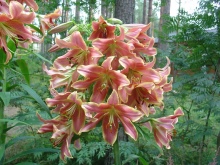
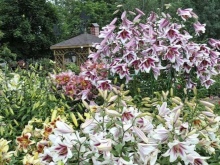
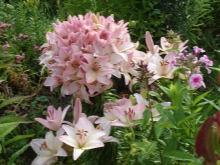
What it is?
The pyramidal lily is not only a beautiful representative of the flora, but also a culture with a mystery. The history of the appearance of the flower is associated with legends. It is believed that this plant originated from the milk of the goddesses.
The columnar lily is a representative of the lily family, it is distinguished by the characteristic type of pyramid. Perennial propagates by bulbous division. The main characteristics of the culture are called the following:
- the lily stem is wrapped in foliage, its length can be from 14 to 250 centimeters;
- leaves can be placed exclusively in the lower half of the lily or along the length of the stem, which forms a kind of rosette;
- the inflorescence has a conical or cylindrical shape, there are options for an umbrella type;
- flowers can be arranged singly or in groups, including from 5 to 15 pieces;
- on average, the buds live from 7 to 14 days.
One pistil has 4 to 8 stamens around it. The flowers are 4-25 centimeters in diameter.
The buds of columnar lilies symbolize not only the beauty of flower forms, but also the originality of color schemes. They are found in purple, white, pink, scarlet or delicate orange tones.
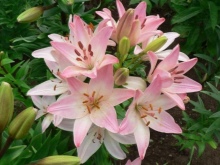
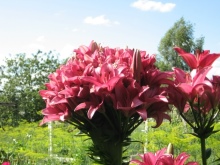
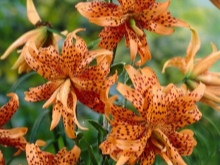
Types and varieties
Breeders are constantly developing new varieties of pyramidal lily. Today, there are about a thousand names for this flower. Some of the varieties are in demand more than others.
Asiatic lily
The flower was bred by hybridizing several plants. Its feature is the ability to change its height depending on the growing area. The flower of this culture is of medium size and cup-shaped. Coloring can vary from white to black. The Asiatic Lily is considered a great choice for impressive compositions.
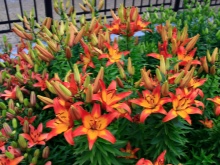
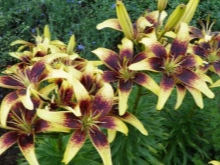
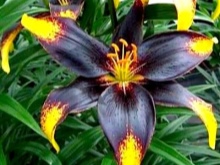
American lily
The hybrid was also bred by crossing several varieties. Thanks to its bright and varied color palette, it is used in landscape compositions for different territories. The culture is characterized by frost resistance, as well as some exactingness to cultivation. During a flower transplant, you need to be extremely careful to avoid damaging the flora representative.
American hybrids are capricious about soil, fertilization and watering.
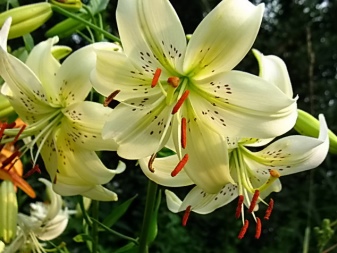

Martagon
This hybrid lily is unpretentious in the care and growing process. This culture has many shades of buds, among which the most popular are delicate pink and beige. "Martagon" has tall stems, so it is planted in groups.


Candidum
The ancestor of this plant is the royal lily. This variety is quite demanding. Due to weak immunity, the flower can hurt in the absence of care for it. If the culture is properly looked after, then it gives a high indicator of decorativeness. "Candidum" looks attractive and original.
Lily can have different shades of buds, but the most common are snow-white, delicate purple.
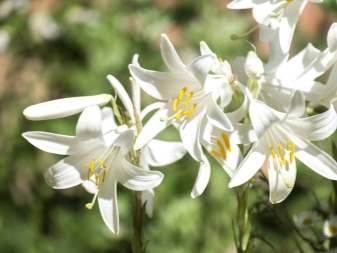

Marlene
It is considered the main type of columnar lily.It is characterized by good frost resistance and early flowering period. An unpretentious representative of the flora does not require a certain type of soil when planting, frequent irrigation. A variety of bright colors are inherent in the buds, due to which this plant is recognized as one of the most popular on the entire planet.
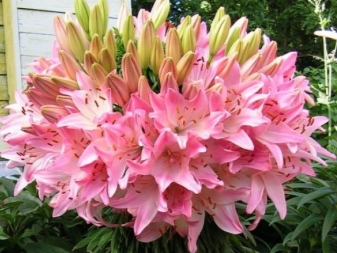
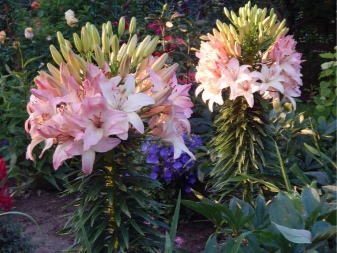
Landing features
It is necessary to plant a pyramidal lily in a sunny area that is free from draft penetration. Before the procedure, peat or humus is introduced into the soil. The addition of manure is prohibited, as this can cause the death of the plant. First of all, it is worth choosing high-quality planting material: the bulbs should not have any damage or disease. Purchased lilies should be planted in containers and sent to a cool place, where they will get used to the ground before planting.
The next step is to dig a hole, which should be equal to three diameters of the plant's bulb. The distance between the holes should be at least 0.1 meters, since the perennial is able to form a large number of children. Columnar lily bulbs are placed in pits and sprinkled with a small amount of substrate. The last step in planting a crop is to water the plantings. Lilies do not like a lot of moisture, so they do not need abundant irrigation.
If all of the above requirements are met, you can count on the fact that lilies will become a beautiful blooming garden. Improper planting can cause the loss of not only plants, but also soil, time, money and effort.

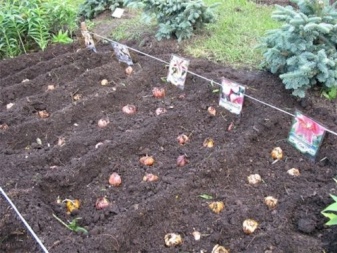
The pyramidal lily can be grown indoors, but in this case the plant is not multi-flowered. In order for the lily to grow at home, you will need to do the following:
- prepare a pot with a diameter of 40 and a height of about 30 centimeters;
- the weight of the onion should be about 30 grams;
- no more than 4 units of planting material can be planted in one pot;
- before planting, the bulbs spend about half a month in the refrigerator, after which they are treated for 2 hours in potassium permanganate, and then for 8 hours in a fertilizer solution;
- in the pot you need to equip holes for drainage;
- the bottom of the container is laid with a drainage layer in the form of expanded clay or foam;
- then a substrate in a volume of 15 centimeters is poured into the container, it includes sand and earth;
- the bulb is planted in the ground in such a way that the roots are lowered downward;
- planting material is covered with 10 centimeters of soil;
- the top soil layer must be loosened by hand - this will provide oxygen access to the roots of the lilies;
- at the end of planting, the young culture should be watered with warm water and sent to a cool room for 30 days.
After this time, a root system is formed in the plant, and it will need to be rearranged to a warm place, where the temperature is +18 degrees Celsius.
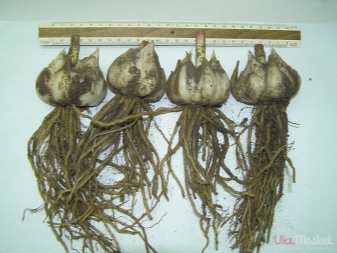

Care Tips
After planting, the lily enters a new stage of its existence. In this phase of life, an exquisite plant needs proper care. To get a blooming flower bed, a florist will have to make some effort, including a number of activities.
- Irrigation should not be too frequent, since this type of plant has a negative attitude towards waterlogging. Watering the flower must be correct; for this, liquid must not be allowed to get on the petals and leaves of the pyramidal lily. Otherwise, a sunburn will form in the place where moisture accumulates.
- Watering should be done every two days, otherwise the root system of the culture will need oxygen and nutrients. Improper irrigation will result in disease and death of the pyramidal lily.
- Cleaning of yellowed foliage and faded buds should be carried out on an ongoing basis. Before the beginning of the frosty period, the culture should be protected by covering a dense structure with a film.
- The feeding of this representative of the flora must be correct.The flower responds well to fertilizers, as they are able to have a beneficial effect on immunity, flowering and lily development.
- The soil near the crop must be in good condition, for this it needs to be loosened and weeded.
- This plant can be transplanted only if the flower is older than three years. Otherwise, the culture will not bloom.
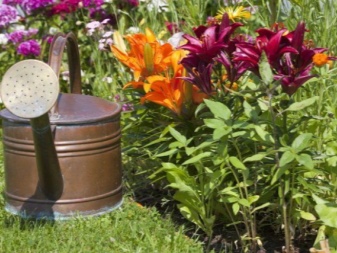
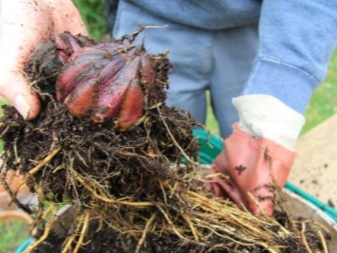
The following types of fertilizers are suitable for a garden beauty:
- with potassium;
- phosphorus-based;
- nitrogen;
- organic in the form of peat, humus;
- mineral mixtures.

Reproduction methods
Pyramidal lilies have the ability to grow indoors and outdoors. Reproduction of this type of plant cannot be called difficult - a novice gardener can handle it. This representative of the flora can be propagated using bulbs that are planted in the ground in the spring. The gardener should remember that the ground should be well warmed up when planting, and the best period is April - early May.
Planting the material in the autumn is not recommended, as the culture may die from the influence of low temperature. Before planting, the bulbs should be treated with insecticides - this will help protect against the invasion of parasites.
When harvesting planting material in the autumn, it should be stored in a dry place so that the flower does not sprout ahead of time.
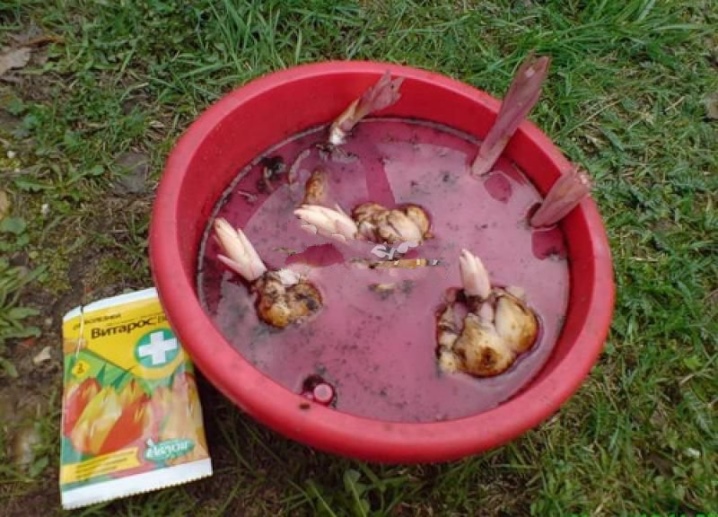
Diseases and pests
Pyramidal lilies often suffer from fusarium. This ailment is carried by fungal spores and insects. It gets to the flowering organism through the roots and develops actively. The disease can be recognized by decay of the root system, the appearance of yellow, brown spots and depressed ulcers. High temperatures and humidity levels are considered to be the cause of Fusarium disease.
And also to the common ailments of this representative of the flora include gray rot, which is manifested by brown spots, which subsequently merge together.
Sclerocial rot can be recognized by the appearance of colorless blotches and black spots on foliage. If these spots turn yellow, then we can talk about the appearance of lily rot.
Penicillosis leads to root rot and decay of the flowers of the culture. This bacterial disease, like fungal infections, can be eliminated with fungicides. A good effect is observed when using substances with a formalin base.
If the pyramidal lily is heavily infected and begins to die, then it should be destroyed, and the soil at the place of growth should be disinfected. In the future, lilies cannot be planted in the same place.
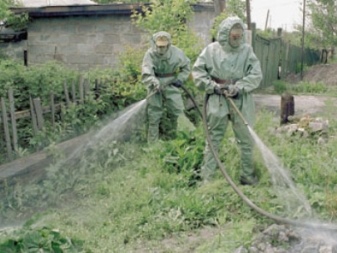
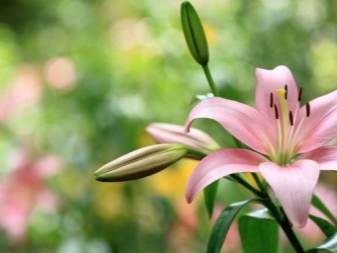
In some cases, lilies can suffer from attacks from street parasites. Onion leaf beetles, potato scoops, and onion root mites can kill a flower. In the fight against parasites, you can use insecticides, as well as preparations based on ash, "Karbofos", "Keltan".
Each garden owner wants to make his site beautiful and well-groomed, so he tries to plant original plant species on it. The pyramidal lily is called the queen of flowers, and this title is well deserved. Few representative of the flora can compare with it in attractiveness and brightness.
See below for more details.







































































































The comment was sent successfully.